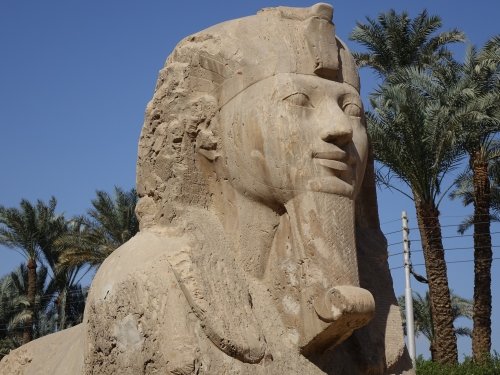Els Slots
WHS #686: the Pyramid Fields
Due to switching to a new employer, I had some unexpected days off on my hands in late October to finish up my unused holiday allowance. Almost immediately I knew that I wanted to spend them at a city trip to Cairo – not too far away but good for 3 quality WHS within 5 days. I started my trip with a long-awaited visit to Memphis and the pyramid fields of Giza and Saqqara . The good thing about this WHS is that it covers the entire history of Egyptian pyramid construction, not just the big and famous pyramids of Giza.

My plan for the first day was to take a bus from the Egyptian museum to Giza. There should be 2 bus lines (355 and 357) that ply this route - but where do these buses stop? The surroundings of the museum are a jumble of multi-lane streets, a fly-over and a roundabout. There are many buses but no bus stops and I also did not see the 2 right bus numbers passing by. So I decided to switch to the metro, which turned out to be a lot easier. Metro station Giza is only 6 stops from downtown. From there I boarded a minibus that runs up and down the main street for the final kilometres towards the 'haram' (Arabic for 'pyramids').
This is the site where the ancient Egyptians had perfected their art of building pyramids. Especially the great pyramids of Cheops and Chefren are perfect in shape, huge and entirely of stone. If you have come by car or the tour bus, you can drive from one pyramid to another on an asphalt road. There are also men with horse carriages and camels that would love to show you around. I just walked - you can take short-cuts through the sand and it is easy to do. Only at a given time I was covered in grains of sand, from my hair to my shoes.

The next day I was transported in luxury to Memphis and Saqqara, about 35 kilometers south of Cairo. Memphis was the first capital of Ancient Egypt and remained important for thousands of years. Nowadays a dusty town has been built over it. The few remains left from Memphis have been brought together in an open-air museum. The showpiece of this museum is a more than 10 meter high statue of Ramses II. This is the same Ramses who placed 4 giant statues of himself in front of the temple of Abu Simbel - he quite liked his own appearance. Its upper body and face are still in good condition. The museum also holds a beautiful alabaster sphinx with the head of (probably) Queen Hatshepsut.
A 10 minute drive away we arrived at the desert area of Saqqara, the burial ground of Memphis. Kings had their pyramids built here and also many graves of noblemen and high officials have been found. The eye-catcher here is the step pyramid of Djoser: this is the first pyramid ever built (27th century BC), albeit still in a primitive form. In front of it lies a sand-covered open square, where in ancient times a festival was held to have the king reconfirm his power. It reminded me a bit of Teotihuacan! Many of the pyramids at Saqqara have collapsed: according to my guide they were built 'low-budget'. The great pyramids costed a lot of effort and money to build, which was often opposed by the general population. The burial chambers under the collapsed pyramids are sometimes still accessible. I entered two of these chambers, including that of the Pharaoh Unas: the long sloping corridor ends in a hallway with a room on both sides. On the right the tomb was placed. Here the walls are covered with hieroglyphics and the image of a starry sky.

From the grounds of Saqqara you also have a good view of the necropolis of Dahshur, a few kilometres away. Its bent pyramid and red pyramid are well recognizable on the horizon. The bent pyramid was the first attempt to build a perfect pyramid, only at the top it went a bit awry. That is why King Snofroe tried again with a pyramid next to it: this time with success - the first 'real' pyramid of ancient Egypt was a fact.
More on
Els SlotsComments
No comments yet.
